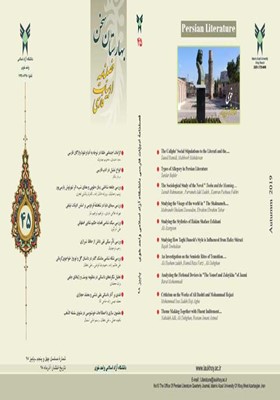Studying the Visage of the world in " The Shahnameh of Ferdowsi " Based on the Propagandistic Literature
Subject Areas : Abstract ArticlesMehraneh Gholami Davoodi 1 , Ebrahim ebrahimtabar 2
1 - Graduated from the Department of Language and Literature, Babol Branch, Islamic Azad University, Babol, Iran.
2 - Associate Professor, Department of Language and Literature, Babol Branch, Islamic Azad University, Babol, Iran.
Keywords:
Abstract :
Abstract The Shahnameh is considered of the Persian didactic masterpieces and by studying it, one becomes acquainted with the geography, history, philosophy, literature, religion, culture of the ancient land of Iran. Having thorough knowledge in all affairs, its composer manifests the different aspects of epic, lyric, and didactic literature. Surveying its values from different dimensions, makes us understand its greatness and glory. The master of the ethics has provided comprehensive teachings and learning in regard to the rich culture of Iran and teachings of pure Islamic religion. We have tried, in this article, to study and recover the world image and by analyzing the context based on the propagandistic literature in the Shahnameh to show how the poet has propagated his religious tenets. It can be concluded that Ferdowsi has thorough belief in Islamic tenets and in an artistic way promulgates this blessed religion.
فهرست منابع و مآخذ
_||_


